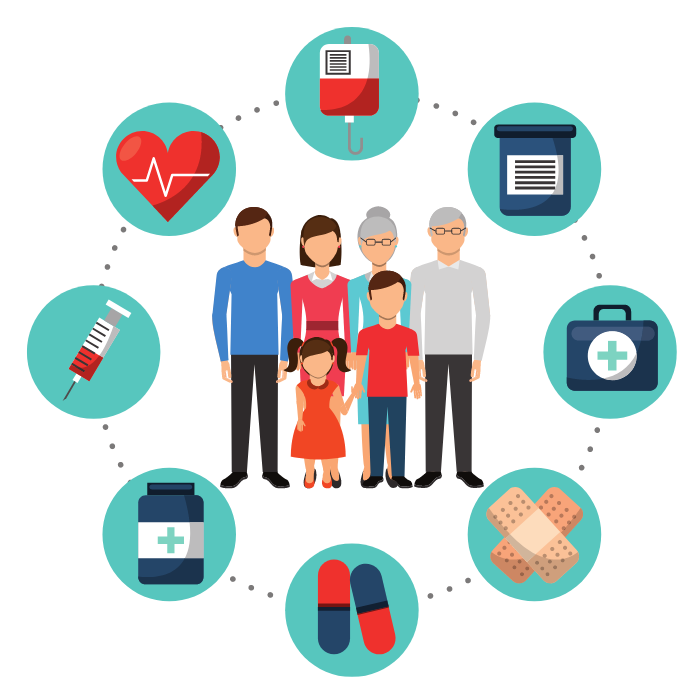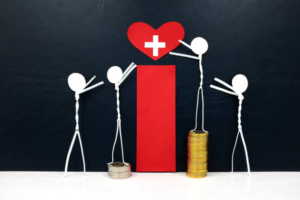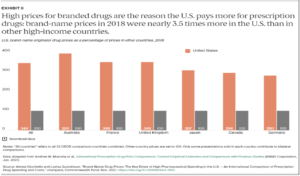
Lower Income: One factor that must be considered when supplementing stewardship programs is considering the effects of lower income status on antibiotic overuse. Master of public health Connor Volpi and his colleagues analyze the income of a county in the United States and the frequency of antibiotic prescriptions — they found that lower patient income was significantly correlated with higher rates of antibiotic prescription, quantifying that, “as the percentage of individuals in a county with an income of at least $65,000 increases, the rates of antimicrobial prescriptions decreases” (Volpi).
Thus, though stewardship programs may be effective, they need to take into account the differing efficacy in lower-income communities. This may look like investing more into antibiotic stewardship programs in low-income communities in order to counteract the increased frequency of antibiotic misuse in these communities. A more recent study, carried out by Nato Tarkhashvili in the Journal of Antimicrobial Stewardship and Healthcare Epidemiology, concludes that a 1% increase in the poverty rate increases antibiotic prescription rate significantly (Tarkhashvili). This means that stewardship programs must be coupled with policies that improve social determinants of populations, and should implement the process of “standardization” which would consider specific patient outcomes when viewing antibiotic stewardship programs in order to prevent generalizing “top prescribers” in low-income areas as “inappropriate” prescribers of antibiotics (Tarkhashvili).
Healthcare Facilities: Although the probability of antibiotic misuse does not necessarily differ between rich and poor people, the lack of financial resources or constrainments may lead to increased risk of self-medication (Mallah). This would mean that people in lower socioeconomic classes and developing countries are more likely to use antibiotics when they are not needed, since they lack access to public healthcare facilities otherwise. Thus, many policy solutions aim at increasing public access to health facilities, which would prevent low-income residents from being forced into having to overuse antibiotics. It is important to note, however, that many of these estimates about higher antibiotic prescription rates in lower socioeconomic regions are not necessarily causative; author Stephen Kissler in the Journal of Infectious Diseases and his colleagues measured differences in outpatient visit rates and antibiotic prescription rates in Boston vs the rest of Massachusetts, noting that geographic variation in antibiotic prescribing throughout the United States results in different health outcomes within the area. This disproves the conventional idea that prescribing practices lead to geographic disparities in antibiotic use, and instead supports the idea that “interventions aimed at reducing geographic disparities in antibiotic prescription” should account for the under-utilization of other health services (Kissler). Though stewardship is focused on reducing the amount of “inappropriate” drug prescription, it is difficult to assess the amount of inappropriate prescriptions because these estimates do not generally take into account the fact that there are also geographical and socioeconomic differences in the true incidence of infections warranting antibiotic treatments — just because a region has low antibiotic prescription rates, it does not mean that there is successful “antibiotic stewardship”; instead, it may just mean that there are lower rates of disease or that certain groups are underutilizing healthcare services. Thus, stewardship programs must be supplemented with policies that make healthcare more accessible. Another solution that can supplement current stewardship programs is an increased focus on health literacy; in her thesis paper at the University of Augsburg, Jama Kausar notes that “the lack of extensive education on antibiotic use seen amongst physicians, medical students, and healthcare facilities has led to [their] over-prescription” (Kausar 14). Kausar then links this to socioeconomic factors: indeed, she cites studies where Hispanic residents from lower socioeconomic backgrounds were less likely to be aware of the proper times to ask for antibiotic prescriptions and were more likely to use antibiotics for viral infections like the flu and the cold. Thus, another important solution is augmenting stewardship programs with health-literacy programs, especially in areas with lower socioeconomic class.




